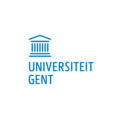In short
Antibiotics have contributed to an increase in life expectancy. However, their use misuse and abuse have accelerated the emergence of resistant strains that undermine these benefits, eliminating the availability of effective treatments for many infectious diseases. Antimicrobial resistance (AMR) is an increasingly serious threat to public health and must be monitored through accurate detection in humans, animals and the environment. One of the mechanisms of AMR involves the transfer of genetic mobile elements, plasmids, between bacterial strains.
Molecular detection of AMR is being investigated as an alternative to the currently used methods. This PhD project aims to improve the detection of AMR by optimising and implementing the use of next generation sequencing methods (NGS), especially for the characterisation of plasmids. Despite all the benefits of NGS, many challenges still need to be solved before they can be used on a larger scale.
Project description
Antimicrobial drugs have contributed to major gains in life expectancy. However, the use and misuse of antimicrobial drugs have accelerated the emergence of drug-resistant strains which is undermining those gains, eliminating the availability of effective treatments for many infectious diseases. It is an increasingly serious threat to global public health and must be monitored through accurate detection in humans, animals and the environment.
There are three mechanisms of AMR known, namely intrinsic resistance: genetic mutations (SNPs) and horizontal gene transfer including plasmids (both naturally occurring in the environment and induced in the laboratory e.g. in the construction of genetically modified micro-organisms, GMM). Since these plasmids often harbor antimicrobial resistance genes, they play a predominant role in the spread of antibiotic resistance genes, as they can cross many species and genus barriers, and mediate transfer of resistance determinants from animal to human pathogens.
The characterisation of AMR is important and should be fast and accurate for surveillance, outbreak investigation, patient treatment advice, detection / monitoring of GMM. Current phenotypic tests are still the gold standard, but they are time-consuming. Molecular detection of AMR is being investigated as an alternative as the currently used methods have their limitations. NGS is an alternative as a fast, multiplex and accurate method to characterise SNPs and plasmids, but there are some challenges, which are addressed in this project.
This project aims to improve the detection of AMR by optimising and implementing the use of second and third generation sequencing methods, especially for the characterisation of plasmids. Despite all the benefits of NGS, many challenges still need to be solved before they can be used on a larger scale, for example by specifically extracting the plasmid DNA and / or properly analysing the huge and complex sequencing data. In this project, a general workflow from sample preparation to data analysis will be created, based on three case studies, in collaboration with experts from the institute. In addition, a database will be developed that contains both chromosomal mutations and plasmids.
This will allow addressing, in a “one health” context, specific health issues related to AMR, including an adequate and rapid response to competent authorities: is the AMR of an isolate associated with a plasmid? Do these plasmids have new variants? Which plasmids circulate in Belgium? Which are a threat (transferable between pathogens)? Which should be included in routine surveillance? How can the genetic content of GMM, including plasmids, be quickly characterised to ensure efficient GMO monitoring?
Sciensano's project investigator(s):
Service(s) working on this project
Partners




